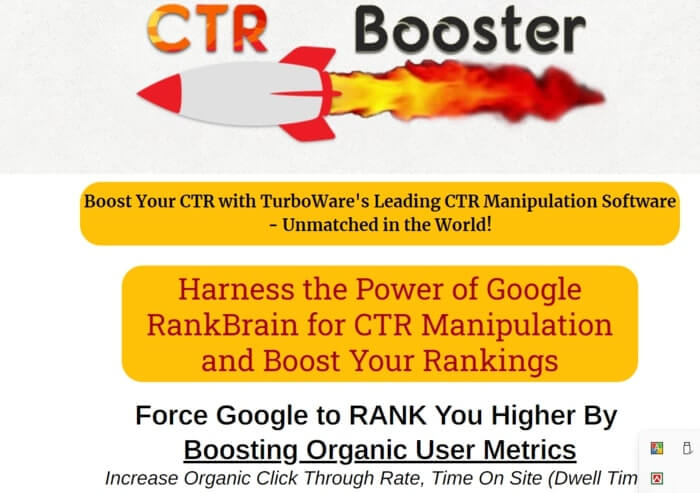Maximize Your SEO Outcomes with LinkDaddy CTR Manipulation Expertise
Wiki Article
Just How to Measure the Impact of CTR Control on Your Marketing
Recognizing the subtleties of click-through rate (CTR) adjustment in advertising is important for services making every effort for real customer involvement. By checking out key metrics such as conversion prices and bounce prices, online marketers can discover prospective disparities that might arise from man-made enhancements.Comprehending CTR Adjustment
Comprehending CTR manipulation is essential for marketers seeking to enhance their campaigns and ensure data honesty. Click-through rate (CTR) refers to the ratio of individuals who click on a certain link to the complete number of users that view the advertisement or content.The implications of CTR manipulation extend beyond simple information distortion; they can threaten trust in electronic advertising and marketing. When organizations count on filled with air metrics, they may buy inefficient campaigns, eventually damaging their return on financial investment. Furthermore, platforms may punish advertisers taking part in such techniques, bring about more ramifications for their advertising efforts.
To effectively combat CTR control, marketers have to create a comprehensive understanding of their information sources and analytics tools. By utilizing innovative tracking methods and looking at traffic resources, they can determine irregular patterns and ensure that their performance metrics reflect genuine customer engagement - CTR Manipulation. This vigilance is critical for fostering long-term success in an increasingly competitive electronic landscape
Secret Metrics to Assess
Reliable analysis of essential metrics is critical for examining truth performance of advertising projects and discovering prospective CTR control. One primary metric to think about is the Click-Through Price (CTR) itself, which stands for the ratio of individuals that click on an advertisement to the overall variety of customers who view it. A sudden spike in CTR may indicate control, requiring additional examination.In addition, keeping track of conversion rates is essential. A high CTR with a low conversion rate can signify that the clicks are not authentic or that the targeting is misaligned (LinkDaddy CTR Manipulation). Examining bounce rates can provide insight into customer involvement; a high bounce rate after a click might recommend that the traffic is not quality-driven.

Devices for Measurement

In addition, A/B screening tools such as Optimizely or VWO can facilitate testing with different advertisement versions to establish which elements drive greater CTR. These devices allow marketing experts to assess real-time performance and make data-driven adjustments. Social media analytics devices, like Hootsuite or Sprout Social, can likewise contribute in recognizing CTR within social platforms, providing insights into audience actions and engagement fads.
Furthermore, warm websites mapping tools, such as Hotjar, can expose exactly how individuals engage with advertisements, aiding to recognize where renovations can be made. Combining these tools creates a robust dimension framework, allowing marketing experts to recognize the results of CTR adjustment effectively. Ultimately, the right selection of measurement devices is essential for making informed advertising decisions and optimizing campaign efficiency.

Reviewing Long-term Impacts
One have to consider the long-lasting impacts of CTR adjustment on overall advertising performance, as temporary gains can usually mask deeper implications. In time, synthetically blew up click-through rates may cause lessened trust from consumers and online search engine alike. When individuals repetitively encounter deceptive practices, they may end up being reluctant to involve with the brand name, causing reduced conversion prices in the future.Furthermore, algorithm updates from platforms such as Google are created to prioritize authentic interaction over inflated metrics. Businesses that rely on CTR control might discover themselves penalized, leading to a decline in natural reach and exposure. This can have a cascading effect on brand name reliability and consumer commitment, eventually undermining the really objectives that the initial manipulation looked for to accomplish.
Additionally, the data accumulated from controlled CTR may mislead marketing professionals in their technique development. Relying on manipulated information can lead to misdirected campaigns that fail to reverberate with the target market, causing thrown away sources and missed out on opportunities. It is important for marketing experts to analyze the long-lasting ramifications of CTR control and prioritize lasting, see page ethical involvement techniques for lasting success.
Moral Considerations in CTR Control
In the world of electronic advertising, honest considerations surrounding CTR adjustment are extremely important. While the wish to boost click-through rates (CTR) can lead to short-term gains, the possible long-lasting repercussions on brand honesty and consumer depend on can not be forgotten.Additionally, moral issues reach compliance with regulations such as the Federal Profession Compensation (FTC) standards, which mandate transparency in marketing. Falling short to stick to these standards can subject businesses to legal ramifications and damage their track record. Online marketers must consider the effects of their methods on customer experience and the wider industry landscape.
Furthermore, the rise of synthetic intelligence and automation in advertising and marketing offers additional ethical problems. Ultimately, ethical advertising and marketing practices should prioritize transparency, honesty, and regard for the consumer, fostering lasting relationships that go beyond simple metrics like CTR.
Verdict
Finally, measuring the impact of CTR control on marketing requires an extensive evaluation of crucial metrics, including click-through rates, conversion rates, and bounce prices. Using analytics devices and carrying out A/B testing can supply important insights right into user involvement and website traffic top quality. Assessing long-term results and sticking to honest factors to consider is crucial for notified decision-making. Eventually, a data-driven strategy makes certain that marketing methods are reliable and lined up with genuine individual communications.Recognizing the nuances of click-through rate (CTR) manipulation in advertising and marketing is necessary for organizations aiming for authentic individual interaction.Effective analysis of crucial metrics is critical for assessing the true efficiency of advertising projects and detecting possible CTR control.One need to think about the long-lasting effects of CTR adjustment on total advertising and marketing performance, as short-term gains can typically mask deeper implications.In the realm of electronic advertising and marketing, honest factors to consider bordering CTR manipulation are critical.In verdict, gauging the effect of CTR manipulation on marketing needs a detailed analysis of essential metrics, important source including click-through prices, conversion prices, and bounce prices.
Report this wiki page